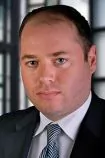The use of biomechanical evidence is increasingly important as more and more low-impact collisions are followed by claims of excessive injuries and fusion surgeries of questionable necessity. A trial judge in New York Supreme Court, Kings County, recently precluded a biomechanical expert with an MD and PhD from testifying in the matter of Singh v Siddique (2016 NY Slip Op 50987(U)). Many courts around the country are closely scrutinizing this type of expert testimony, and we anticipate "Frye" hearings, in almost all cases, will be requested by plaintiffs in the hope of getting the expert precluded, leaving courts to rule on whether the testimony is sufficiently reliable to be admissible. Lewis Brisbois' New York office continues to argue for the admissibility of biomechanical experts' expected testimony by making sure that their opinions are supported by all necessary evidence in the record, including vehicle model information, crush analysis, peer-reviewed studies, photographs, inspections, and repair records. The following is a review of the Singh case.
The accident – Singh v. Siddique
On October 24, 2011, plaintiff's vehicle was rear-ended by the Defendant's vehicle. Plaintiff claimed various soft-tissue injuries to his neck and back and eventually underwent surgery. The case proceeded to trial and, on March 22, 2016, the jury rendered a verdict on liability in Plaintiff's favor. Thereafter, and before the start of the trial on damages, Plaintiff moved to preclude the testimony of Defendant's biomechanical expert.
Plaintiff's motion in limine
Plaintiff's motion in limine cited decisions regarding the admissibility of biomechanical engineers' testimony and several articles from professional journals supporting the preclusion of such testimony at trial. Plaintiff argued the expert's opinions were unreliable, conclusory, and lacking foundation because the expert did not inspect either vehicle involved in the underlying incident, his calculations were not based on the data from the model of vehicle that Plaintiff was driving, and he failed to consider Plaintiff's body size and position within the vehicle. The expert also did not consider the tire or roadway conditions or Plaintiff's medical records. Plaintiff argued further that the expert could not cite to a study that conclusively correlates "Delta-V" change in vehicle velocity with the presence or absence of bodily injuries in motor vehicle accidents.
Defendant's opposition
Defendant opposed the motion by relying on an excerpt from a book entitled "Reference Manual on Scientific Evidence" and 17 prior decisions on the admissibility of biomechanical testimony. Defendant relied heavily on case law to the effect that biomechanical engineering principles are generally accepted in the scientific community and are therefore admissible, even when the biomechanical engineer lacks a medical degree. Defendant argued further that, at best, any deficiencies in the expert's report may be addressed during cross-examination and that Plaintiff did not provide an expert affidavit supporting his position that biomechanical engineering is speculative and conclusory.
The "Frye" Standard
New York courts apply the "Frye" standard to determine whether expert testimony is admissible. See Frye v United States, 293 F 1013 (DC Cir 1923). As explained by New York's Court of Appeals, the Frye test asks "whether the accepted techniques, when properly performed, generate results accepted as reliable within the scientific community generally," and "while courts will go a long way in admitting expert testimony deduced from a well-recognized scientific principle or discovery, the thing from which the deduction is made must be sufficiently established to have gained general acceptance in the particular field in which it belongs ... It 'emphasizes `counting scientists' votes rather than on verifying the soundness of a scientific conclusion.'" Parker v Mobil Oil Corp., 7 N.Y.3d 434, 446-7 (2006)(citations omitted).
The Court's decision
Following a Frye hearing, the Court granted the motion and precluded the expert from testifying on the grounds that he had not demonstrated competency in the field of biomechanics as applied to motor vehicle accidents and because his methods of obtaining relevant data did not adhere to accepted standards of reliability in order to support his expert opinions.
Specifically, the Court determined that the expert was to be precluded because:
- His resume was sparse as to his experience and research in the field of biomechanical engineering with respect to motor vehicle accidents and injuries
- His measurements with respect to "crush analysis" were taken from a photograph of the vehicle's damage, which the Court found "less than credible"
- He utilized the average weight and age of vehicle occupants, rather than Plaintiff's weight and age
- He failed to annex any peer-reviewed articles to validate his methods, in support of his conclusion that Plaintiff's injuries could not have been sustained in the underlying incident
- The expert's citations to scientific studies were found to be outdated and/or irrelevant
- He was unable to cite a single study that conclusively correlates the Delta-V change in velocity with bodily injuries in motor vehicle accidents
The Court cautioned that, while biomechanical engineers are generally permitted to testify if their conclusions are supported with proper methodology, the expert must first establish that "the processes and methods employed in formulating his or her opinion adhere to accepted standards of reliability within the field." Otherwise the expert should be precluded.
Broader implications
First, experts must be able to fully demonstrate their expertise. The Court's opinion specifically mentioned the lack of relevant studies, presentations, and research on motor vehicle accidents and injuries cited on the expert's resume and his inability to testify competently based upon peer-reviewed industry standards and data. Experts should ensure that their resumes fully reflect their competency and expertise in their field and be able to bolster the proffered testimony by making their prior studies, reports, presentations, and/or other relevant materials available to the Court. Attorneys should encourage experts in this task when necessary.
Second, attorneys must perform their due diligence with respect to the expert testimony they are seeking to admit and ensure that they have retained experts who are fully aware of their legal obligations to ensure the admissibility of their opinions. Counsel must ensure that the expert disclosure and trial materials fully comply with the case law and thoroughly match the legal requirements for admissibility.
Third, experts should be encouraged to analyze all available physical evidence and be prepared to explain their position if certain evidence is no longer available. As the Court noted, taking measurements of motor vehicle damage from a photograph is simply insufficient, particularly where other evidence, such as repair records, could have been obtained and supplied to the expert and then compared with data from the actual model of vehicle.
Fourth, courts have become significantly more open to testimony from biomechanical engineers provided their opinions are sufficiently grounded and, as noted by the Court's decision, the Second Department will not preclude biomechanical engineers unless a Frye hearing has been conducted (see White v Luna, 139 AD3d 939 (2d Dept. 2016); see also Plate v Palisade Film Delivery Corp., 39 AD3d 835, 837 (2d Dept. 2007); Anderson v Persell, 272 AD2d 733 (3d Dept. 2000); Abramson v Pick Quick Foods Inc., 56 AD3d 702 (2d Dept. 2008) (admitting biomechanical testimony that "the force of the slip and fall was insufficient to cause the femoral prosthesis to break, and that the plaintiff's alleged injuries actually resulted from metal fatigue in the plaintiff's prosthetic device"); Cocca v Conway, 283 AD2d 787(3d Dept. 2001) (admitting testimony of two biomechanical engineers on the question of whether, inter alia, "the average rearward acceleration and the average lateral acceleration of the plaintiff's vehicle were minimal and that the anatomical forces resulting from an impact at the plaintiff's computed accelerations are noninjurious, [and] are well within the range of normal human physiological tolerance")).
The mandatory Frye hearing, prior to preclusion, at the very least ensures that attorneys have the opportunity to create a record with respect to their biomechanical experts, ensuring that the Appellate Division has all of the findings of fact and law available for proper appellate review.
In conclusion, we continue to work closely with biomechanical experts to ensure that their expert testimony will be admissible at trial. Based on the issues outlined in Singh v Siddique and similar authorities, it is vital that biomechanical experts be given the opportunity to inspect the vehicles and review photographs, repair records, vehicle damage estimates, and any other evidence which will support their opinions. The biomechanical expert should also be given the plaintiff's medical records and diagnostic films to review, as well as the deposition testimony of both drivers.
We believe the reasoning of the Singh decision can be overcome by giving the expert sufficient evidence upon which to base their opinions at trial. It is also helpful to retain an expert with an MD and try to get an IME doctor to comment on the likelihood of the injury being caused by the impact.
The content of this article is intended to provide a general guide to the subject matter. Specialist advice should be sought about your specific circumstances.


